The following photo was published in a January 2016 post covering locations I had not identified. I have no idea why I did not recognise this pub, having walked past it many times and been inside on a number of occasions. The sign on the front also had part of the name. Luckily there were a number of readers more observant, or with a better memory than me as it is the Hand and Shears at 1 Middle Street at the junction with Cloth Fair, close to Smithfield Market and the church of St. Bartholomew the Great. The photograph was taken by my father in 1952.
Last week I had the opportunity for a visit to the pub which is still looking very good, sixty-five years after my father’s photo.
The name of the pub should have been obvious from the sign on the corner of the building. There is the symbol of a hand and shears at the top and part of the name is given at the bottom of the sign which reads:
“Moorland celebrates the grant of a Justices Licence to …Shears on the 1st May 1552 …. of service to the Public”
The words before Shears must be ‘Hand and’ and I suspect after 1552 it may have read ‘for years’.
The Justices Licence refers to the Alehouse Act of 1552 which defined in law that it was illegal to sell beer or ale without the consent of the local Justices of the Peace. This was the first time that a licence was required to sell beer and ale and was an attempt to address the drunkenness and disorder that was being caused by the widespread availability of alcohol.
The Act required that each person granted a licence was responsible for maintaining good behavior at their premises and any problems could result in a fine or loss of licence. From the sign it appears that the Hand and Shears was granted a licence in 1552.
The pub must have been working prior to the grant of a licence as a sign above the door states that the Hand and Shears was established in 1532 so a pub has been on the site for almost 500 years.
One more comment about the large sign on the 1952 pub, it is also advertising the brewery Barclay’s “Doctor” brand. This referred to beer brewed by the brewery that had a picture of Dr Johnson on the label.
The building that the Hand and Shears occupied in the photos above obviously does not date from 1532. It was built around 1852 as the following picture of the pub is dated 1852 and is of the new building of the Hand and Shears. It has hardly changed in 165 years.
The name Hand and Shears probably originates from the early days of Bartholomew Fair when it was the England’s main cloth fair. I have read a number of different sources attributing the name to either the use of shears at the fair, the cloth workers or the Mayor of London opening the fair by cutting the first piece of cloth.
The Hand and Shears prior to the nineteenth century building occupied the building shown in the following 1811 etching.
The title to the above etching is Pye Power Court, Cloth Fair.
Pubs provided many functions to their local community in addition to selling beer. Inquests would be held in the building, meetings of various societies, they organised sporting events and for the Hand and Shears there was the special role of the hosting the Pye Powder Court.
A Pye Powder Court dates from medieval times when the role of the court was to have jurisdiction over disputes between merchants and the public at a market or fair. They would also cover any other general dispute arising on fair grounds.
The name Pye Powder comes from ‘pied puldreaux’ the French word for Pedlar.
The Pye Powder Court held in the Hand and Shears had jurisdiction over the Cloth Fair and later Bartholomew Fair in nearby Smithfield.
Pye Powder Courts fell out of use in the mid-nineteenth century. Some of the last were held in the Hand and Shears and the following report from the Illustrated London News dated the 5th September 1846 covers one of these events:
“BARTHOLOMEW FAIR – On Wednesday, the usual proclamations for holding the fair were issued from the Pie-Powder Court, but the preparations presented the prospects of a very sorry realisation of the pleasures of this once favourite and popular place of metropolitan resort. The Pie-powder Court, one of the most expeditious, if not one of the most ancient courts of law in the kingdom, and to which the administration of the law on all matters pertaining to the fair, or offences committed in it, was confided, is now almost limited to Bartholomew Fair, where its duties are confined to the receipts of piccage, stallage and tollage. The court, whose proceedings are now merely nominal, is still held at the Hand and Shears public-house, in Cloth Fair.”
The terms piccage (money paid at fairs for breaking ground for a booth) and stallage (rental or fees for holding a stall in a market), like Pye Powder both have French origins so must date from the medieval period and the use of French for many legal regulations after 1066.
The following page is from Londina Illustrata published in 1811 and shows the Pye Powder Court in session. The text below the picture of the Hand and Shears reads “This Court is held at a Public House, known by the Sign of the Hand and Shears, the corner of Middle Street and King Street, as exhibited in the Vignette. The scene above, is descriptive of the Court held in the dining room, where the judge, attended by his secretary, is determining a cause between two histrionic complaints, respecting some injury sustained in the neighbouring fair of St. Bartholomew, by one of the parties.”
As well as the Pye Powder Court, other activities carried out at the Hands and Shears included inquests into deaths. There are numerous reports of these and they show the almost casual nature of death and lack of accountability in the city – I would recommend a read of 19th century newspapers for anyone who today criticises red tape and health and safety.
One report from the London City Press on the 18th February 1860 reads:
“FATAL ACCIDENT IN REDCROSS SQUARE – On Tuesday, the Coroner held an inquest at the Hand and Shears, Cloth-fair, on the body of George William Killby, aged 19 years, son of Mr. Inspector Killby of the City Police Force, whose death was occasioned under the following circumstances – On Monday, the 6th instant, the deceased and a young man named Joseph King, were walking along the above square on the foot-pavement, and upon arriving nearly opposite the gateway of Messrs. Treggon’s zinc manufactory, a loaded van was being drawn out of the gateway by a man in their employ, two others pushing behind, when, in consequence of there being a slight decline, the van overpowered them, and the off shaft pinned the deceased against the wall, the near shaft making a hole in the wall. He was extricated as soon as possible, and removed to his residence in Bartholomew-close, and Mr. Timothy, surgeon, of Barbican, attended him, and rendered every assistance; but he gradually declined and died on Saturday from inflammation of the bowels, the result of the injury.
The Coroner summed up, and the jury, after having consulted together, the room having been cleared, ultimately returned a verdict of ‘Accidental death’; but they considered that vans should not be drawn out of the gateway in question without a horse, as this was not the first accident that had occurred, though fortunately the others had not been attended with loss of life.”
A full view of the Hand and Shears. The sign today boasts that the pub is the opportunity for the Last Ales before Newgate Public Executions.
The Hand and Shears was also the meeting place of the Bartholomew Club, a club of local people who met to discuss current political issues and points of historical interest, and the London City Press on the 22nd December 1868 reports on the annual dinner of the members and friends of the club, held in the Hand and Shears where a “substantial and satisfactory” dinner was provided. There followed a very large number of toasts, and proposing the health of various members and at the end “the company departed after spending a very agreeable and harmonious evening.
The pub has two bars, the Public Bar and the Saloon Bar. This is the corner entrance to the Public Bar:
The entrance to the Saloon Bar on Kinghorn Street:
Tiled entrance to the Saloon Bar:
Internally the Hand and Shears is a wonderful pub. A central island bar around which are the public and saloon bars (although there is very little difference between the two). I visited on a Tuesday afternoon which probably explains why it was so quiet, it is usually much busier at lunchtime and evenings.
Wooden paneling and polished wooden floor:
It is fascinating to sit in the Hand and Shears with a pint and contemplate all the people and events that have taken place here over the years. Both the exterior and interior of the pub appear to have hardly changed since the pub was built.
Whether it will remain in the future must be a concern given the fate of so many pubs across London. The area around Smithfield will change considerably over the coming years.
Walk through the short passage opposite the Hand and Shears to Long Lane and a sign of these changes can be seen in the form of the new Farringdon Station on the Crossrail / Elizabeth Line.
Future Smithfield developments also include the relocation of the Museum of London which will occupy part of the old market buildings. This area will change significantly.
As well as the Hand and Shears, there are a number of long-standing small businesses in the area. Along Long Lane is Evans and Witt (supplier of all manner of office supplies) which still retains the 01 telephone number on the facade.
And the Smithfield Cafe:
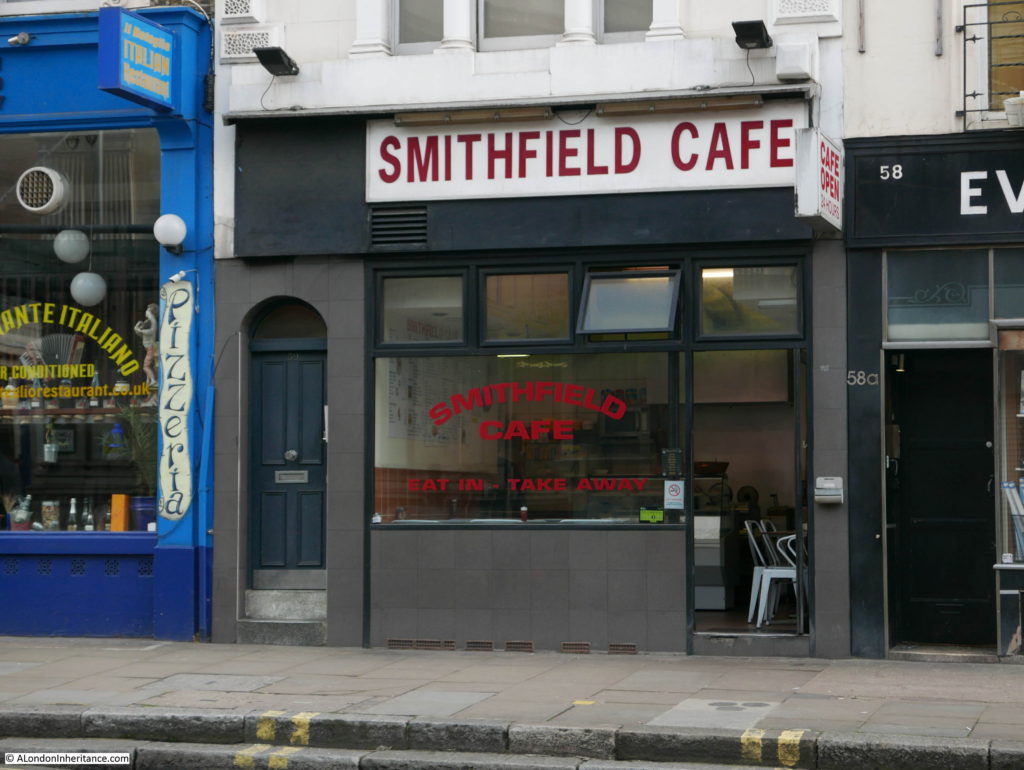 Many of the pubs my father photographed have disappeared. I have already written about the Tiger Tavern, the Gun Tavern and the Ticket Porter, so it is great to see the Hand and Shears still in business and much the same as when he took the original photo back in 1952.
Many of the pubs my father photographed have disappeared. I have already written about the Tiger Tavern, the Gun Tavern and the Ticket Porter, so it is great to see the Hand and Shears still in business and much the same as when he took the original photo back in 1952.
I hope it stays as it is and in business for many years to come.

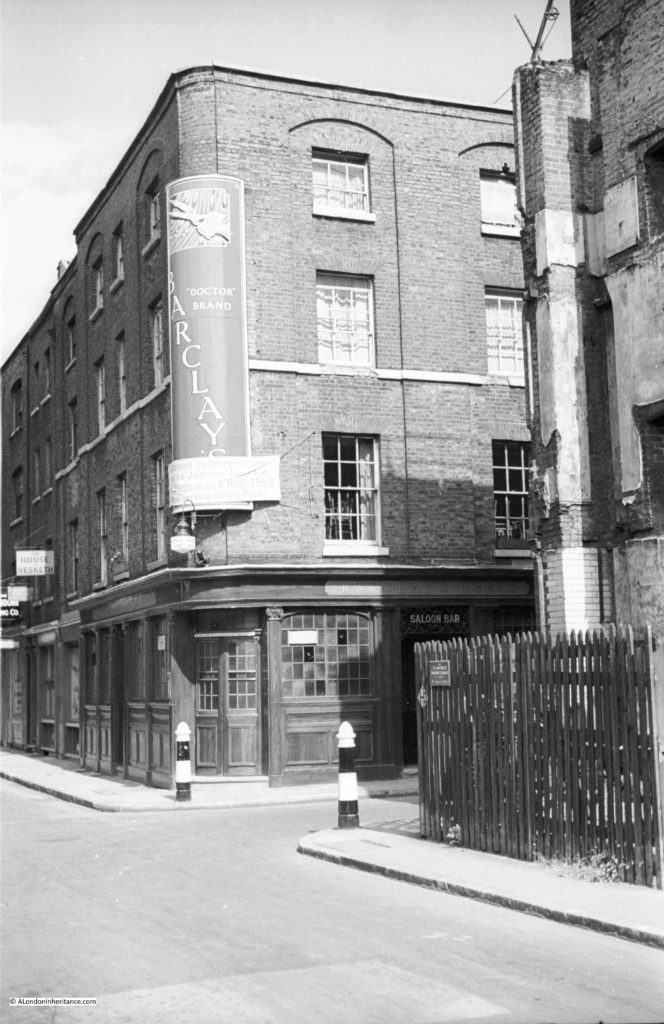



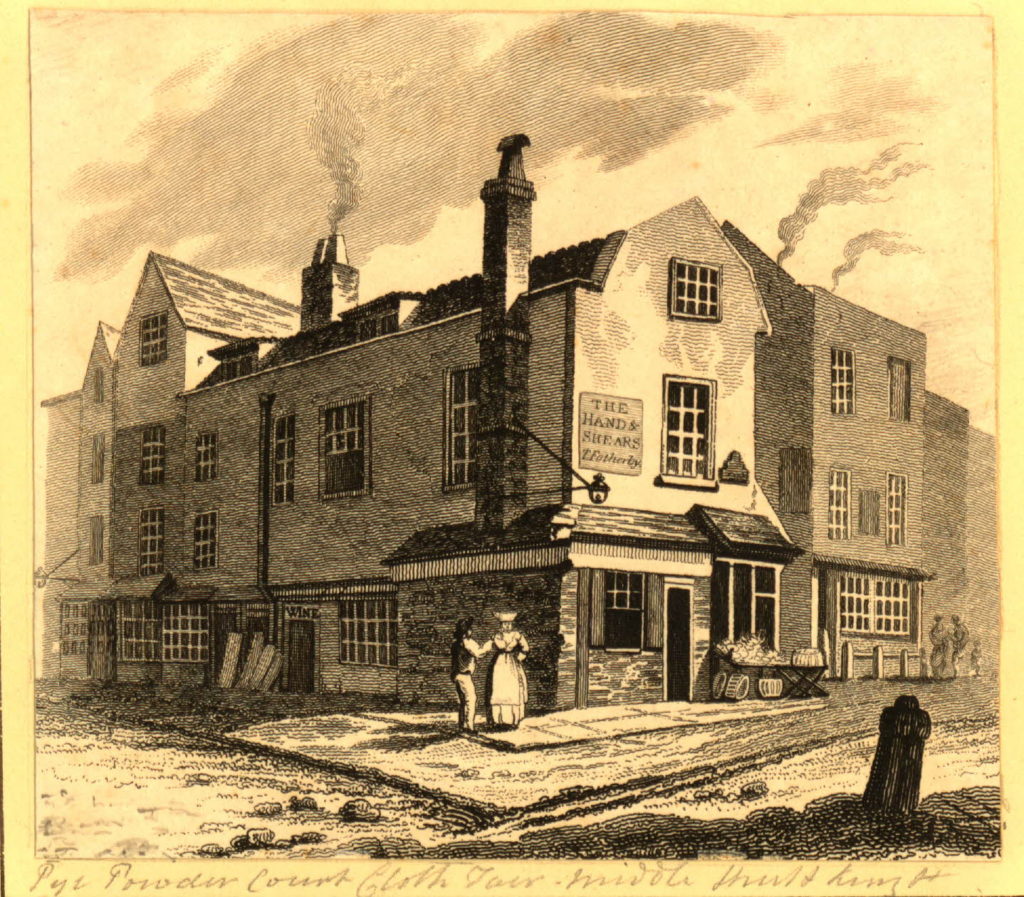
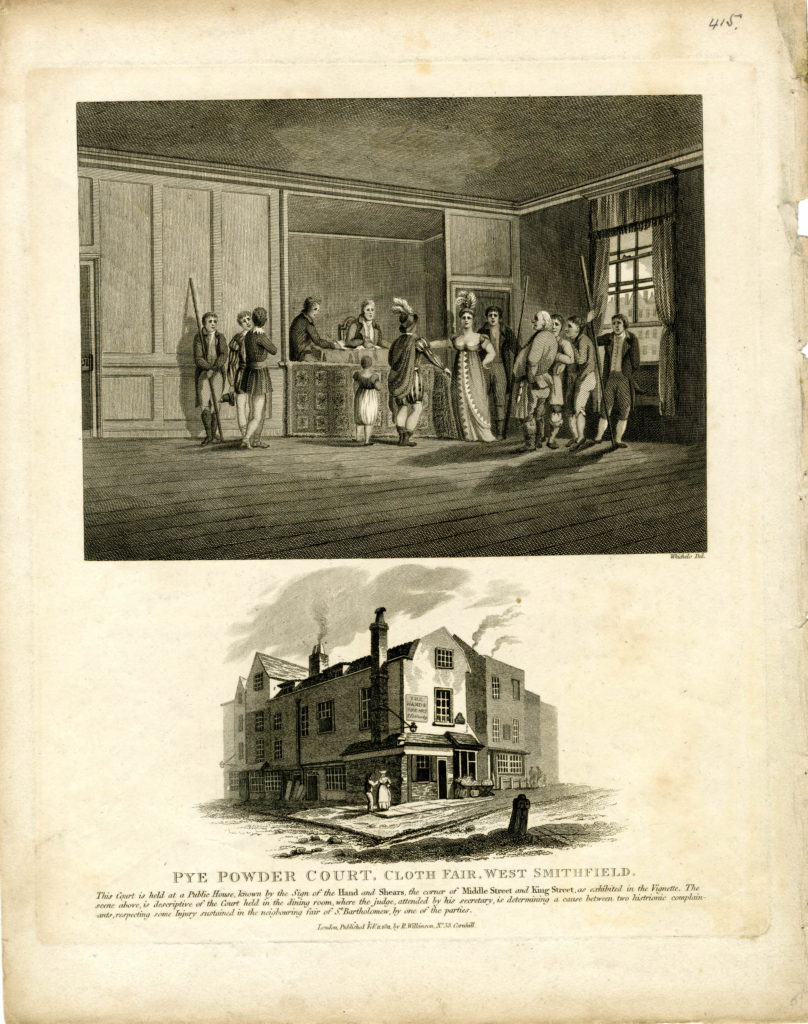

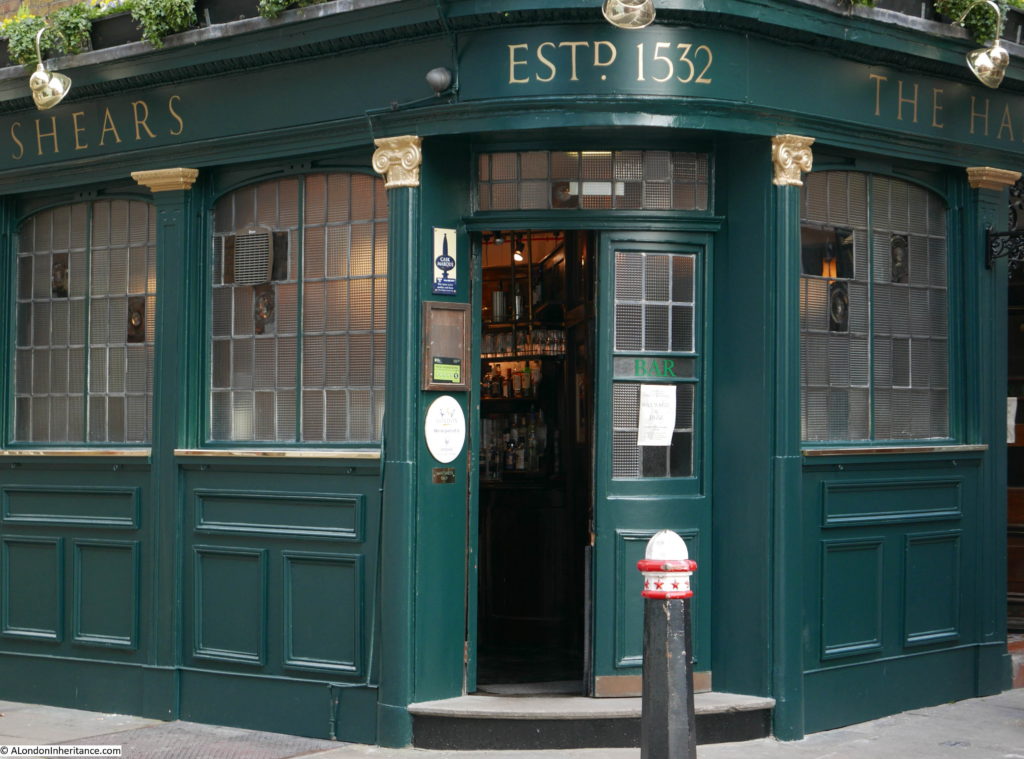
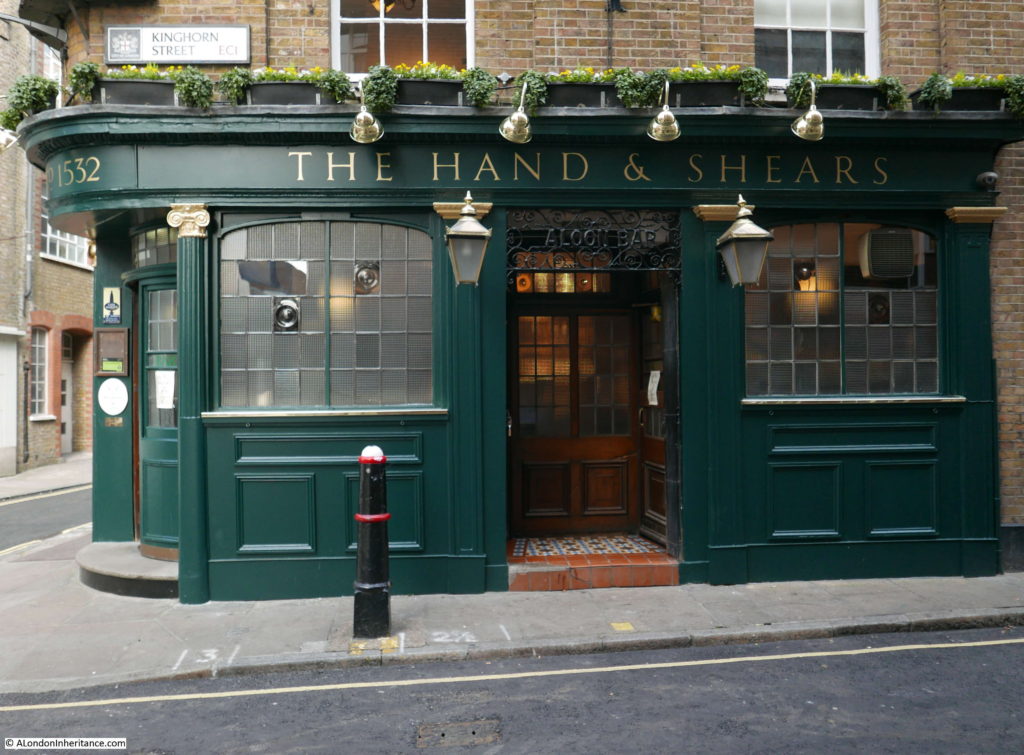

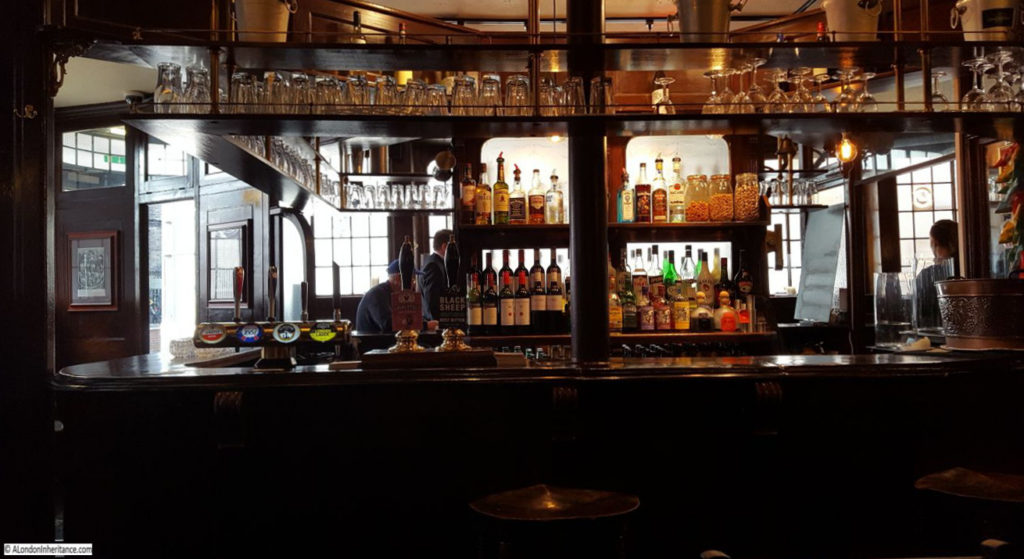
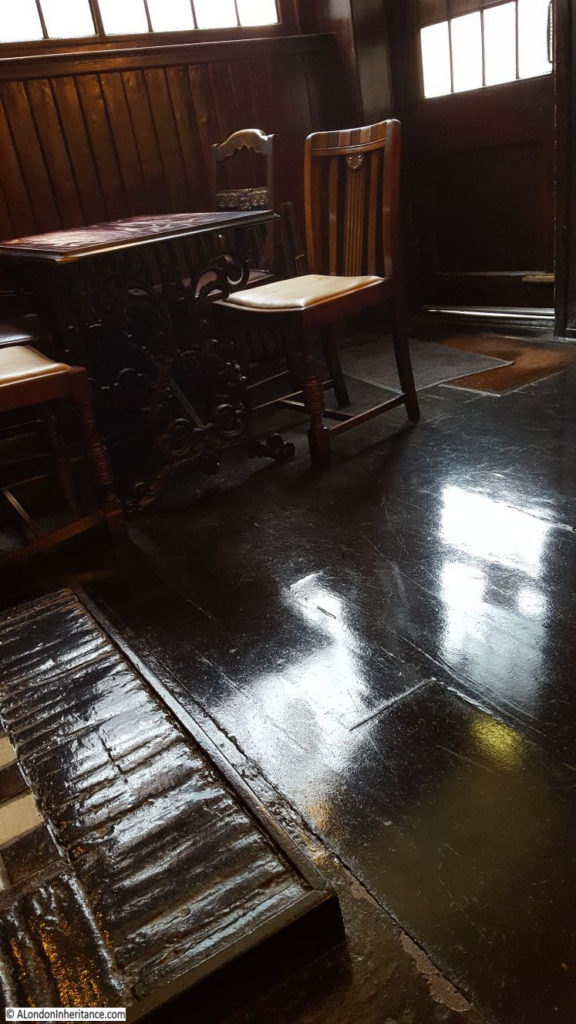
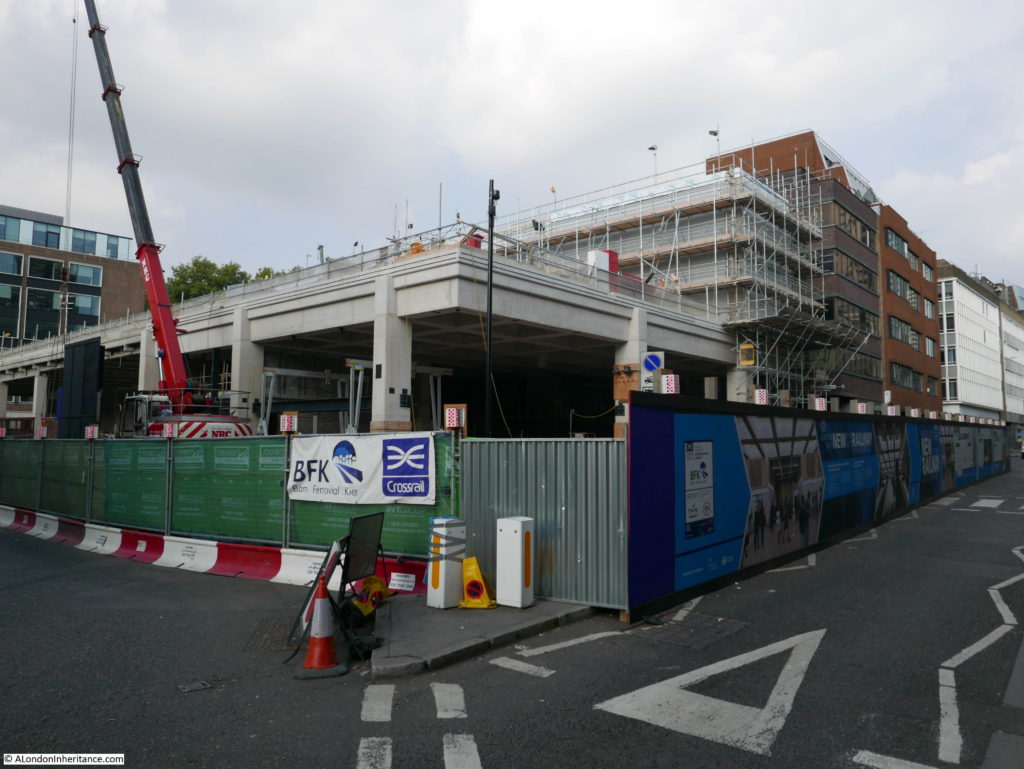
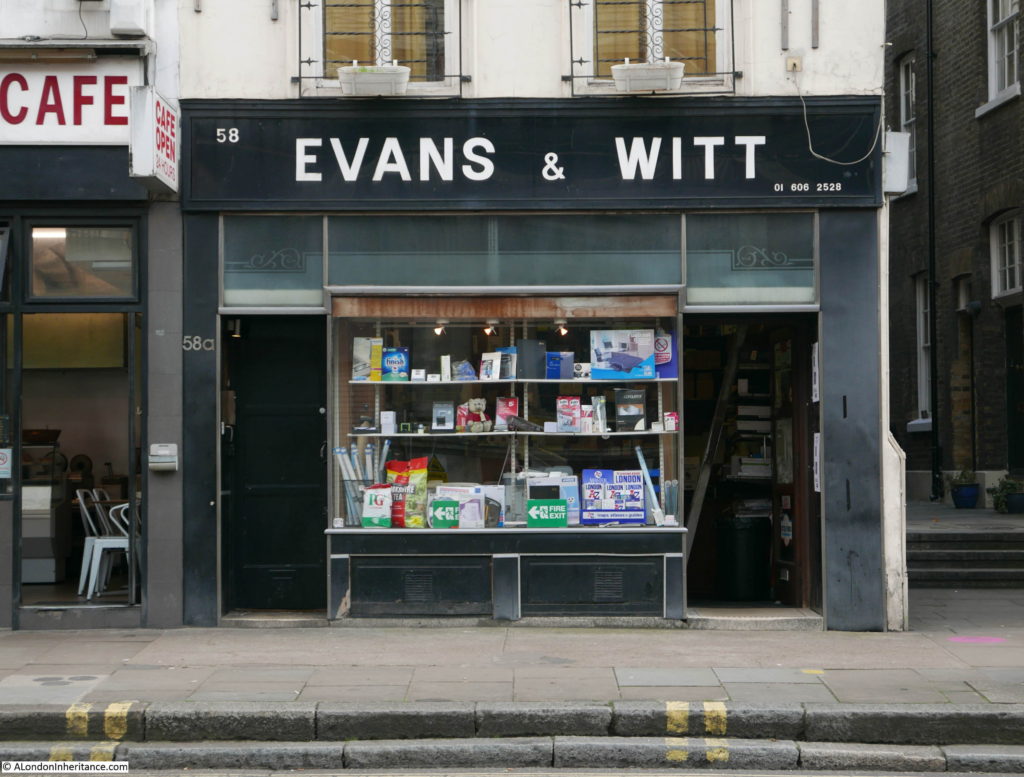
What a looked forward to occupation on a Sunday afternoon to read A London Inderitance post. On this occasion about the Hand and Shears pub. I shall add it my list of places to visit next time I am lucky enough to travel to London from Perth Western Australia
Excellent Sunday morning stroll! Many years ago I was a student nurse at Barts and it was said that the Hand and Shears was within bleep-range so that doctors working nights could be having a beer and still be summoned, should the need arise. Not entirely sure how true that was but many of the pubs in the area had different licencing laws because of the meat market and could stay open till morning. I haven’t been in for many years but will make a point of re-visiting soon. I too hope the pub stays open and think it will, bearing in mind all the residential redevelopment taking place around Bartholomew Close at present. Completely and utterly unrecognisable now. Still, it has been many things in 800 years and I expect it will be many more. I’ll have a pint, thanks.
The Barts “rugby song’ had the words ‘ From the Magpie to the White Hart I would stagger by for the last pint of the evening at the old Hand and Shears’. In the days before ‘bleeps’ – the porter from the hospital would cross the road to the White Hart to get a doctor who had been called when he was on duty. For what it is worth – having been married at Barts the Less in January 1963 we had our reception in the Hand and Shears. It was during one of the coldest spells of the century when the Barts fountain froze – there were icicles hanging down the outside of the pub.
I think the song went: from the White Hart to the Magpie, down Smithfield as I staggered by, for the last pint of the evening at the old Hand and Shears
I think you are correct Richard. It is over 50 years since I sung the song and I had forgotten the actual order of the pubs!
2nd verse (middle 8)’ “My friends they all did flatter me,
I flogged my Greys Anatomy, my pint pot of silver, and went on my way…. Toooo the White Heart etc.
I was a Eastbourne pub pianist in the 1950s
Danny. I sung the song many times when I was a student in the late 50s and never heard a second verse. What was the rest of it? I still have my Grey’s Anatomy.
Lovely story, thank you!
Another excellent post,Admin and another pub to be added to our pub crawls around the town. I know my granddaughter will like this one,with its wood panelling and polished floors. I think I’m influencing her for the good.
Excellent article – The H&S has been our local for 10 years as we’ve worked in various offices around Smithfield over the last decade. We are in the TV and communications business so hardly typical of the traditional employment of the area. The view from the corner of the H&S of the Dick Whittington (now a private house) and the Old Red Cow in an old photo from the 1860s (?) shows how densely provided with refreshment the area was. Keep up the good work because there aren’t many organised sites dealing with historic London. All best wishes, Mark Andrews.
My parents owned the Hand and Shears in 1962 and I was born there. On the second floor I am told. My Mum refused to go anywhere near the hospital students who drank there so insisted on having me above the bar. 100s of beef rolls were still sold.
My Grandparents owned it in the late 1920s/early 1930s when my Dad was born. We paid a visit in 2002 which was his first trip back since childhood. Maybe we will get another chance to visit.
Hello Jennie,I worked as a barman in about 1968.Was your father called George?
My parents owned the Hand & Shears for several years in the mid to late 50’s, not sure exactly, although I do have a number of photos of us dated 1958
Bruce my father worked as a barman at the Hand and Shears in the ’50’s. I can’t remember the exact years but the owner was Donovan or O’Donovan.
I went to school, St. Joseph’s, Bunhill Row, with his twin son and daughter. I think her name was Eileen or Irene.
We left that school aged 11 in 1958. (So would be 73 now). Went to different schools so don’t know what happened after that and I can’t remember if my father still worked there as he worked in several pubs in Clerkenwell.
Any chance you are related to the O’Donovans or maybe your parents took over the pub from them.
I just HAVE to comment on this wonderful piece of History thank you so much you have helped me piece together some of my G.Grandfathers footsteps.
The whole family were born and bred in the cloth fair, Hanover street, MayFair district, Joseph My G.Grandpa spent time in the workhouse and ragged school and was a street boy, (I have yet to find the deaths of his parents to piece the situation together) he eventually joined the 53rd Regiment of Foot at Westminster, went onto see the world, never went back to the area but lived a full Military life, 24yrs. I can now help my Grandchildren to view where Joseph was born, lived early life much easier for kids to understand. I’m so pleased I found your site thank you for the Heritage in photos you’ve given me and my family.
My grandparents had this pub in the late 1940’s
My mum was around 14 years old at the time (she’s now almost 88)
Its great to read all the comments from people that have a history with the hand and shears. I have an interesting history with her as well. I was manager here from early 1998 until early 2001. and about half way through my tenure I found out that the hand and shears was the last address of my great great grandfather in 1839 before he boarded the ship The Cuba and emigrated to New Zealand. How long he was there is unknown but it is mentioned on the passenger list of the Cuba. However from the day I moved in there it always felt like I belonged there. I was moved on by the owners , Scottish and Newcastle, in 2001 and miss it greatly. As soon as we are able to travel again we plan to travel to London from our home in New Zealand and the hand and shears will be one of the first stops.
Thanks for this article – I used to work as a programmer in an office in Glasshouse Yard (just north of Barbican station) in the early 1970s, and we always went round to the Hand and Shears on Thursday evenings after work. I’m so glad it’s still there (hope it is indeed there now!).
I worked as a part time barman at the Hand & Shears in the mid 1960’s.
The landlord then was George Kruml,originally from Czechoslovakia.
I remember his wonderful handlebar moustache,him having a limp ( he told us he fought with the partisans against the Nazis) and his love of single malts.
He kept the pub in tip-top order and I learned a lot from him about customer service. He forbade us from talking about religion,politics and football to the customers!
There is a link with my Grandfather who owned the pub in the 20s. He was a retired Army Major who moved to East Anglia to run other pubs. When WW2 started he joined the Home Guard and because of his family roots in Norway plus his military background he was posted to Shetland to help the Norwegian Resistance
Thanks so much for this. My great-grandparents owned and ran it in the early 1920s. Perhaps a little earlier too, I’m not sure. It’s a lovely pub!
It’s possible that your Great Grandparents sold it to my Grandfather. He had it during the late 1920s. It would have been 1927 at the latest but could have been earlier. He was an army man who served in WW1, retiring at some point after. I think he had a pub in Sevenoaks 1924 and then 2 pubs in East Anglia in the 30s
The owner of the Hand and Shears, Paul, sadly passed away earlier this year.
The pub is run by his young widow Issy who also owns The Two Brewers in Whitecross St.
she would love this article.
it was early one morning that I got the warning that I would be going to Bart’s hospital so I bought my greys anatomy, as friends they did flatter me as off I went to the hospital
From the white heart to the magpie, cross Smithfield I did stagger by,
For the last pint of the evening at the old hand and shears.
There were 3 verses to my memmory.